
At the still point of the turning world. Neither flesh nor fleshless;/
Neither from nor towards; at the still point, there the dance is,/
But neither arrest nor movement. And do not call it fixity,/
Where past and future are gathered. Neither movement from nor towards,/
Neither ascent nor decline. Except for the point, the still point,/
There would be no dance, and there is only the dance.
Burnt Norton, T.S. Eliot, the first poem of Eliot’s Four Quartets
In his book, Visual Faith: Art,Theology, & Worship in Dialogue, William A. Dyrness reflects on how artists serve their work, “Artists are servants who must suffer at the hands of the creature. Christ put this in the starkest terms, ‘If any want to become my followers, let them deny themselves and take up their cross and follow me.’ (Matthew 16:24). Again this is a call to all Christians, but artists understand this call, it seems to me, in a particularly intimate way. Artists are called to suffer in and with the material they handle. Making art is a daily discipline. One must spend time in reflection and prayer, though this is not the whole of the Christian life. Similarly, one may spend time in reflection, but that is not art. Art is after all largely a craft, a sitting down to work with materials. And here the pain (and the joy) begins, for immediately the recalcitrance of the materials confronts the artist. Since I work with words, I understand best the feeling of utter dismay at the slipperiness of words, their fragility, their inability to bear all that I want to put on them. I know with T. S. Eliot that ‘Words, strain/Crack and sometimes break, . . . / Will not stay still.’ (lines from Eliot’s poem, Burnt Norton.)
After 9/11/01, Makoto Fujimura began a series of paintings based on T.S. Eliot’s Four Quartets. Regarding this series, a reviewer wrote: “While ‘The Wasteland’ is considered by many to be the greatest poem of the twentieth century, for Fujimura ‘Four Quartets’ achieves an even clearer focus on the fundamental questions of art and literature, among them sacrifice, mystery, intuitive response and the eloquence of materiality . . .” (quoted on the artist’s website: www.makotofujimura.com ). Fujimura’s work with Eliot’s text, with its ‘eloquent materiality’, is a wonderful example of an artist serving the work.
Comments welcome.

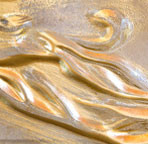
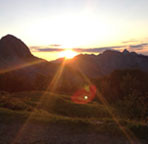
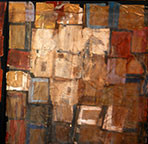
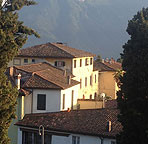
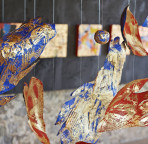
. . . the still point
This is a most moving reading for this 4th Sunday of Advent. And the conversation with Makoto Fujimura, a beautiful call to express faith as one is able.
Thank you,
Rachel
I am one of the many who appreciate Bill Dyrness’s Visual Faith book. But I find myself wondering if many artists might be thinking that their suffering begins not with the “call to suffer in and with the material they handle,” but rather with the suffering they must expect to endure in providing for the material needs of themselves and their families in a society, and a church, which does not really consider the artist as worthy of his hire. I now believe that if “making art is a daily discipline” that we can enjoin on our artists of faith, then it is incumbent on the church community to find ways for artists to keep food on the table as they accept this daily discipline.
Yes, John, good point. I believe this conversation needs to be engaged on many levels. The artist grappling with his medium does needs to know the support of the larger community. As you know, in the conclusion to his book, Bill looks forward to renewal—not only in the church’s vision for the Arts but also in “fresh workings of God’s Spirit.” And here he commends the practice by some churches of commissioning artist’s works for devotion and worship: “Or what if these artists were commissioned like missionaries to exercise their sanctified imaginations within the art world? Or in art schools?” . . .